Besides the many historical monuments that Delhi is famous for, the capital city of India now draws tourists to its organic market at the Sunder Nursery—the green hub, which is now a valuable part of Delhi’s urban heritage. Similar eco parks are also being developed in metro cities of India like Kolkata for people to have an interactive experience with nature.
Text & Photographs : Manjira Majumdar
February is one of the best times to visit Delhi. The bitter winter has bid adieu and the ‘lohri’ songs have been sung over bonfires. The temperatures start rising. The flowers are all abloom and the verdant greenery with wide open spaces and monuments, along with lovely sunshine, make certain tourist hot spots, ever so enjoyable.
A walk in and around Janpath, lazily gazing at curio shops or eyeing the colourful bags and cushions spilling over from the pavements; a quick bite at Wenger’s confectionary located in colonial Connaught Place, are worth a thousand emotions. In addition, hanging out at the art and cultural centre at Triveni Kala Sangam, bargain hunting for crafts and textiles at Dilli Haat are perennial favourites. So are a visit to the Qutub Minar, the Humayan’s Tomb, Lodhi Gardens and Jama Masjid areas for a feel of history and heritage. For gastronomical delights, there is always the Parathe-wali Gali, the meaty fare at Karim’s, and Nathu’s for sweets. But all this is part of our old associations with a city that is changing beyond recognition.
The modern Delhi of the glitzy malls, the swanky eating joints offering a mind boggling variety always prepares you for something new. The various walks – heritage, gastronomical, nature –that are conducted by guides acquaint you to the city; almost like old wine packaged in new bottles. Added to the list today are the organic markets with their mindboggling fare.
Growing organic
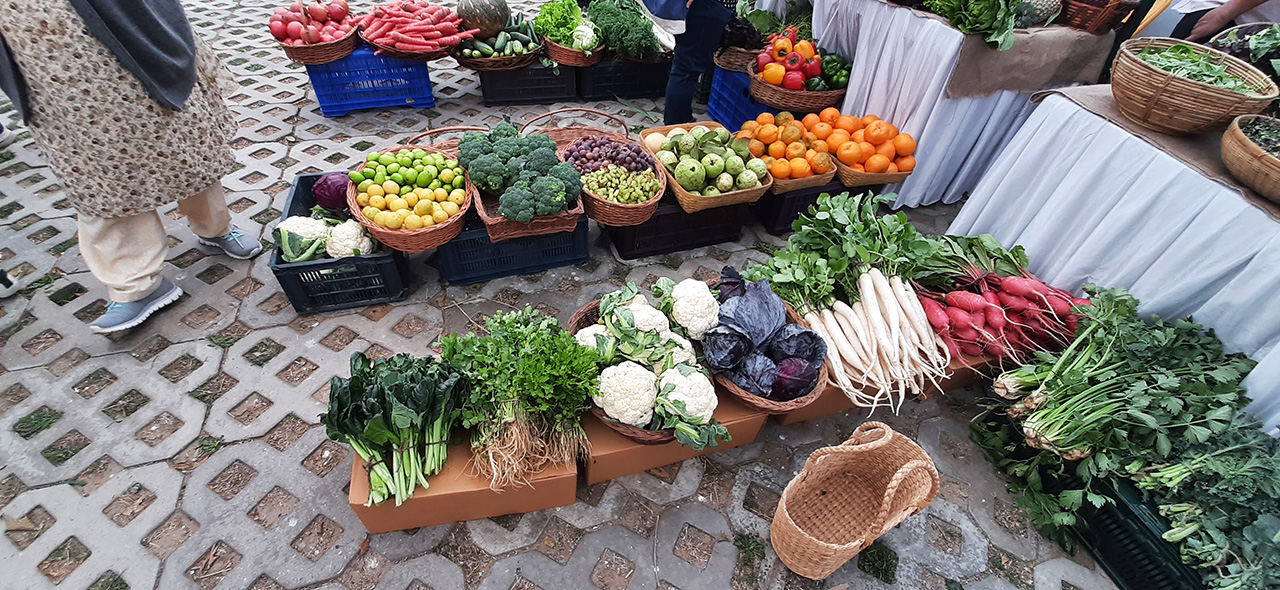
Organic markets are of two types: one where you get exotic type of vegetables and fruits for which a more controlled temperature is required; and the other where you get the regular kind of vegetables like potato, cabbage, cauliflower, ladyfinger, etc.,but grown organically without using chemical fertilizers – just compost made of natural matter like dead leaves and natural waste.
Terms such as farmers` markets and organic came to be first associated with foreign exotic vegetables and fruits not all of which were grown here or easily available in India; vegetables such as asparagus, zucchini, kale and before that broccoli and Brussels sprouts that was available only at select outlets in metro cities. More and more items were being added to the ever-growing list –kiwi, avocado, aloe vera, quinoa, desi moringa and tulsi tea. Now, the good news is that we can organically grow anything. Or maybe we were growing it but did not have an easily recognisable name or an organic tag for the products. And New Delhi being our capital city is always a step ahead when it comes to introducing anything new. The northern states of India — Punjab, Himachal Pradesh and Uttarkhand which are blessed with cool climate are the major producers and suppliers of some of the exotic vegetables and fruits available in the metro cities in India.
UNESCO-Sunder Nursery
The Sunday organic market at the Sunder Nursery behind Humayan’s Tomb in Delhi provides you with an amazing experience to see, feel and buy a large variety of organic products. Formerly known as Azim Bagh, it is a 16th-century heritage park complex housing 15 heritage monuments. During the British rule, the nursery was established to grow experimental plants, which gave it its current designation as Sunder Nursery. The “Sunder” part of the name comes from the Sunder Burj tomb located in the same premises.
One can get lost in the history of the Mughal ruins, the fine architecture of the mausoleum, when not soaking in the heritage park`s natural beauty and bounty. It is an excellent urban park with a distinct micro-habitat trying to restore Delhi’s ecological diversity as also flora from other parts of the country, brought in for experiments. The experience here leaves you invigorated and refreshed for the entire day!
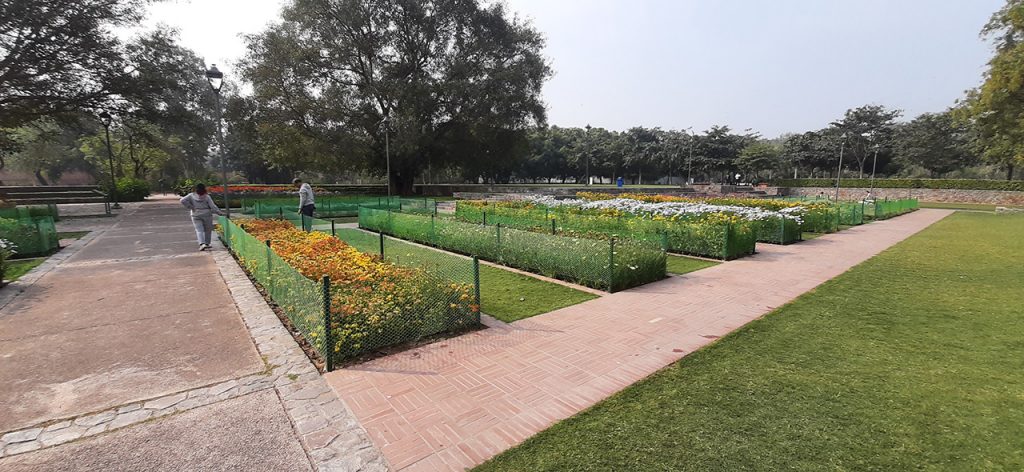
Open from eight in the morning, one can combine the two trips; one immersing in the Mughal history by visiting the ruins and tombs in the vicinity. And the other a nature trail that includes the Sunder Nursery and its organic market.The beauty of exploring the place is to do so in the lap of nature fast vanishing from our earth.
Sunder Nursery has an interesting history. It was set up by the British in 1913 in what was the legendary Grand Trunk Road. This once neglected garden has received a beautiful makeover since UNESCO declared it as a world heritage site in 2016. Sunder Nursery was opened for the general public after a decade of restoration work by the Aga Khan Trust for Culture. Today, even the prestigious TIME magazine mentions it as one of the 100 must-visit places in the world.
“The Aga Khan Trust for Culture had signed a memorandum to redevelop Sunder Nursery in collaboration with Delhi’s Central Public Works Department, the Archaeological Survey of India and the South Delhi Municipal Corporation in 2007. After a decade of work and patience, the 90-acre Sunder Nursery is now dotted with historical monuments, two amphitheatres, 280 tree species, 36 butterfly species, and a bonsai enclosure among other features” (source: Aga Khan Development Network), which has taken the responsibility to maintain the heritage park for 10 years.
About 20 acres is devoted to the nursery. A large variety of beautiful flowers are a testament to the painstaking efforts of the Trust. It serves as the biggest nursery to the people of Delhi. Now that it has become ticketed, it is very well maintained.
Rows and rows of flower beds – petunia, phlox, azalea — among many other exotic flora are in bloom in a riot of colours around this time of the year. With the cuckoo calling, it seems to herald the advent of spring. To make children aware of the environment, busloads of school children arrive to enjoy the unadulterated joy of the fresh morning air and a lovely mild day spent in picnicking at this heritage site to know about plants and birds.
One can combine the tomb visit and nursery sojourn on the same day and decide which to do first. The walk through the nursery first is a better option for the organic market is not only ideal to get your weekly organic supplies but also a good exercise to tone up your muscles. History can wait till you have had a wonderful breakfast by choosing from a number of healthy options on offer.
Breakfast in wonderland
Every Sunday morning this organic market within the nursery turns into a wonderland. Tables and chairs set up randomly; stalls selling a variety of exotic fresh fruits, vegetables and other products spoiling you for choice — all of these make a delectable picture amidst acres of verdant beauty. It is a pet-friendly zone and people are seen walking their dogs who seem to enjoy the wide open space as much as their owners.
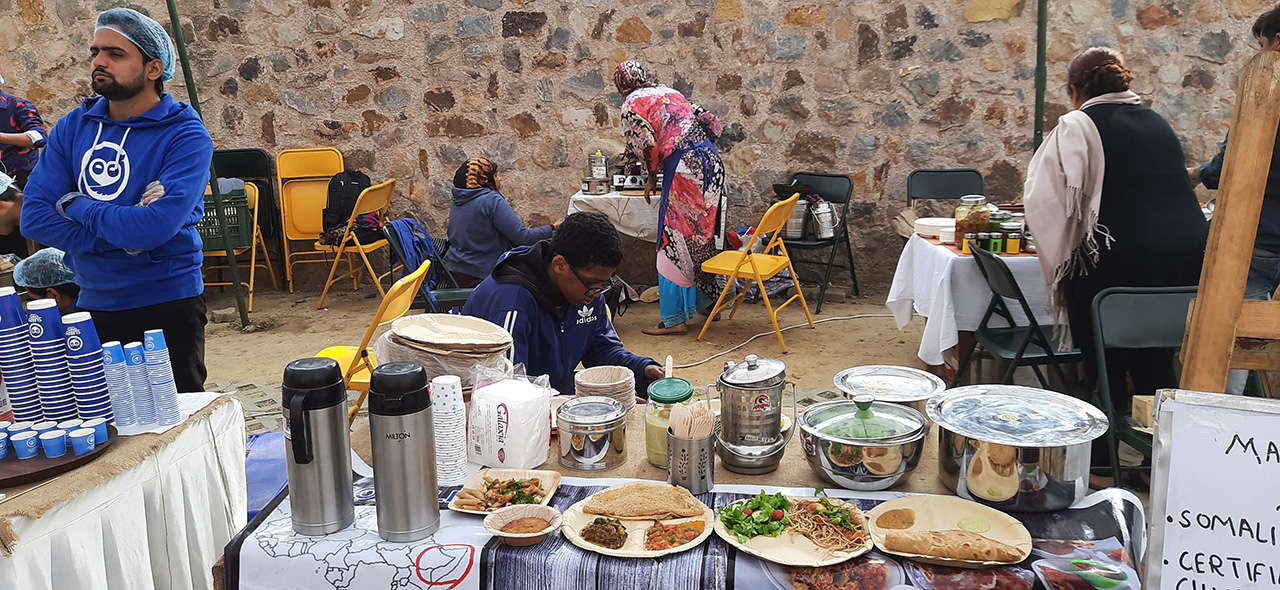
The breakfast arena offers an interesting variety of Indian snacks. For instance, crispy dosas, in a whole different range of cereals and not just the regular mix of rice and urad daal batter. Semolina and ragi varieties too tempt you ,and one can wash it down with cold pressed fresh fruit (seasonal) juices. One cannot dream of a better breakfast – tasty, healthy and nutritious. There is chole bhature too, with bhature made with whole wheat flour.
A Somalian refugee family (Delhi is home to Somalian, Syrian, Afghan, Burmese and Tibetan refugees), has set up a stall selling interesting items of food including what they call gluten-free Anjeero or Somali dosa. Everything is gluten free at this stall. Different kinds of herbal and caffeine free tea and coffee are available in some stall or the other; either as a hot beverage or packaged. What is a pleasure to note is there is no compromise in the taste.
A walk amidst ruins
After a sumptuous Sunday breakfast, it is time to saunter into the Humayan’s Tomb Complex for which you have to walk a bit or take your vehicle around. The Complex has always been known as a garden complex as the Mughals were known for their well laid out gardens. The garden here is a typical Persian Char Bagh layout, with four causeways radiating from the central building dividing the garden into four smaller segments.
The causeways sometimes are adorned with water features. According to Persian architectural landscaping style, this symbolizes the Garden of Paradise, which according to Quranic beliefs, consists of four rivers: one each of water, milk, honey and wine. The garden has always housed trees serving a host of purposes like providing shade, producing fruits, flowers and nurturing, birds. Therefore, this heritage complex with the Mughal garden and nursery exist in perfect harmony and peace.
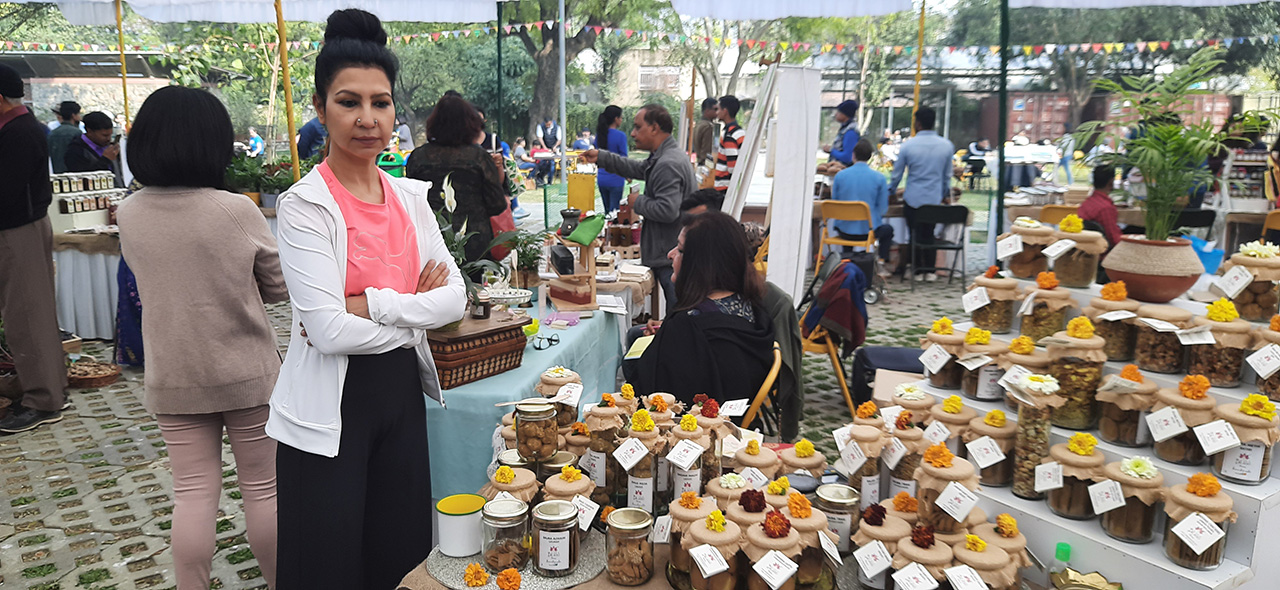
variety of healthy snacks, as well as many other interesting organic products
Humayan’sTomb has always been a big draw for tourists and now with the heritage park in all its finery being thrown open to the public, one can look forward to spending an entire day exploring the complex. This splendid tomb built in the memory of the second Mughal emperor is an architectural beauty, which the Aga Khan Trust for Culture has also helped to renovate.
This tomb constructed of red sandstone has two domes, which are covered with pearly white marble. Lattice work so common in Mughal architecture forms a part of the style inside. It is an amalgamation of Turkish, Persian and Indian (small canopies or chhatries) of architectural styles.
In Delhi, Dastakar too holds Nature’s Bazaar but these are seasonal in nature. A range of organic and natural products make their way here. But what Sunder Nursery provides is an interactive experience of enjoying nature amidst ecological and heritage trails. Cultural events are being planned making it an all-encompassing experience that other cities may just find hard to replicatedue to lack of space.
The urban farmers of Kolkata
Even if Kolkata, my hometown lacks a heritage park the kind that Delhi has, various ecological hubs have been built to make way for birds, bees and flora to co-exist in harmony. The Eco Park in New Town is worth a mention as a new picnic spot spread over 480 acres along a beautiful lake. Consisting of separate subsections of flora and butterflies, the cactus and rose gardens add to the exotic charm of the Park.
More than a dozen varieties of birds, including the stork-billed kingfisher, white bellied woodpecker, Bengal bushlark, Malabar whistling thrush, striated babbler, black bitter, plaintive cuckoo and pied cuckoo have been spotted in the Eco Park.
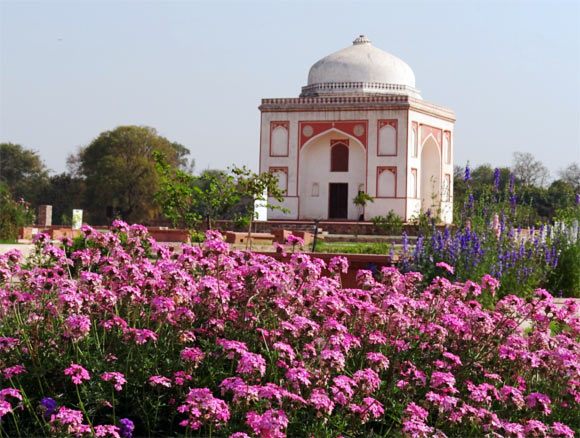
In addition, very small but typical no-frill farmers` markets have sprouted. These are held typically over the weekends resembling the concept of a ‘haat’ where villagers bring their wares to display and sell. Even seedlings and saplings are sold in these markets.
In Kolkata, a farmers` market, basically selling organic produce, is held in a place called Ultadanga, in the eastern part of the city. The sellers display their goods for a few hours every Sunday morning. The vegetables are small in size as they are produced by small farmers but are great in taste. So are the mushrooms and various herbs. The produce gets sold out fast. The market is held in association with the state government and other organisations that help small producers grow and sell their organic products.
There are several organisations in our metros that not only grow organic vegetables and fruits but help you to start organic vegetable garden in your home. These could be anywhere – rooftops, terraces, balconies and even on wide window sills. The best part of growing these products is they are all organic, using natural compost rather than chemical fertilizers and service these gardens with earth, saplings of your preference. One such city outfit is called ‘Harri Mitti’.
Its motto is “grow organic herbs and vegetables in your home garden without any hassle”. It offers a choice of over 40 varieties of herbs and vegetables (different gourds, spinach, ladyfinger, cucumber, tomatoes, bell pepper) according to your taste and weather, providing the crates with plants; their staff comes and set them up for you and continue to supply the required composts. Their only advice is to maintain your modest garden by watering them twice a day and keep them protected from birds, squirrels and rats.

In each of our metros, there are similar markets and suppliers, which have encouraged the urban farmer in some of us. Discounting the initial cost of setting up the garden, it can prove to be quite cost effective in the long run. Perhaps this trend may increase in the days to come for a better quality and more sustainable way of life.
Similarly Mumbai, Bangalore, Pune, Chennai too have their share of urban farmers producing organic fare locally or even to the rest of the country.
Embracing change in the future
One of the biggest lessons of the corona virus pandemic has been reconnecting us with nature. We went to bed one night peacefully and woke up the next day in another world that forced us to remain indoors and go out of our homes, only when absolutely necessary.
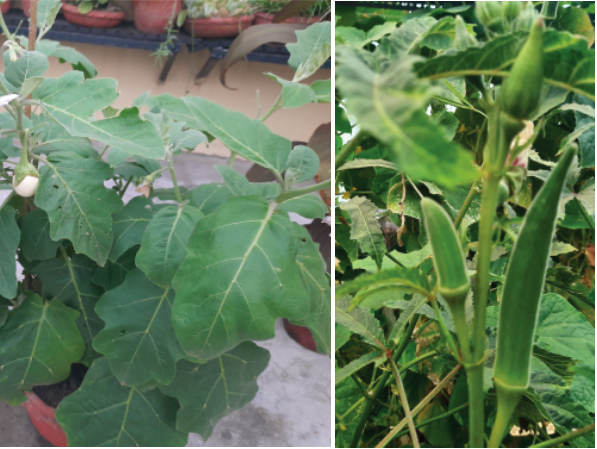
As we humans started devising all kinds of methods to sustain, we began to increasingly feel the fresh air, notice that the sky was bluer and the leaves more green and fresh. Organically grown vegetables have huge health and environmental benefits. We could perhaps return to this concept of growing our daily produce. The basic theory in organic gardening is that nature is our best nurturer. . The organic gardener takes care of the soil, and by not resorting to chemical pesticides, the products are more earth-friendly; rich in vitamins, nutrients and needless to add, full of flavours. The emphasis is on to boost immunity and body metabolism. And if these come up near heritage sites, perhaps tourism can also get a boost.
The small farmers’ markets are usually known through the word of mouth and even though some organic products like jam, jelly, relish, and sauces are branded, they cannot yet boast of huge markets. There is greater need to popularise these products than treat them like an expensive fad.
A small step for us individuals to save our planet but when it becomes a collective effort, it is a big leap!
Manjira Majumdar
Having worked as a full-time journalist, Manjira Majumdar today is an independent journalist combining writing with part-time college teaching and media advocacy. She is also the author of 3 children’s books: Ten of Us, The Story of Anjana and Ghost Stories from Bengal & Beyond.
[/column]

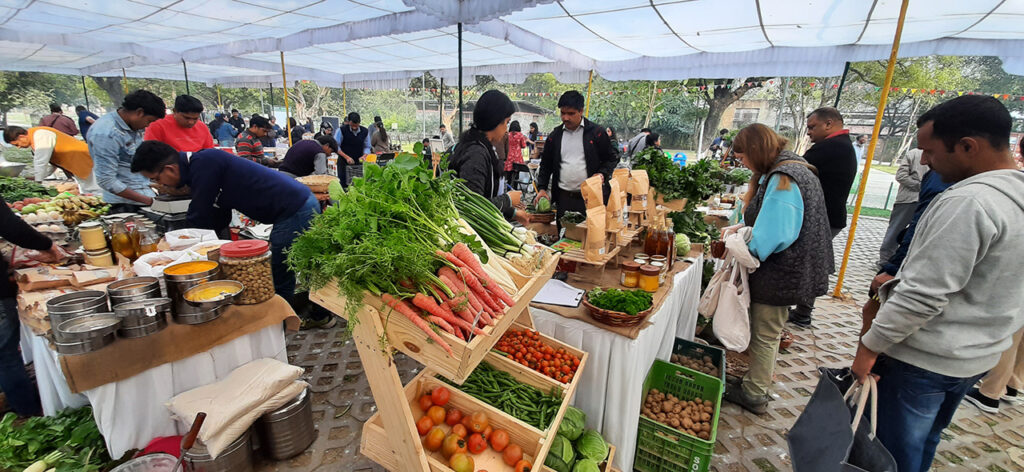
 [/column]
[/column]